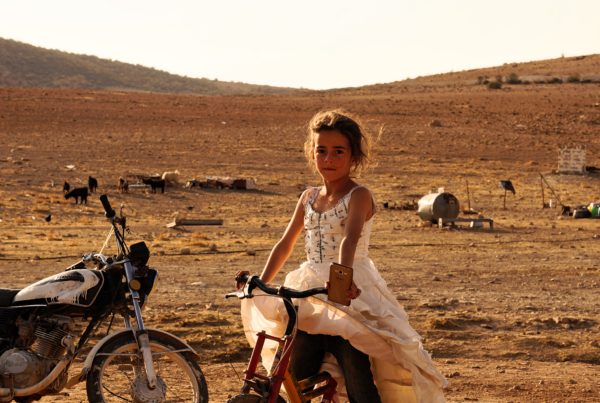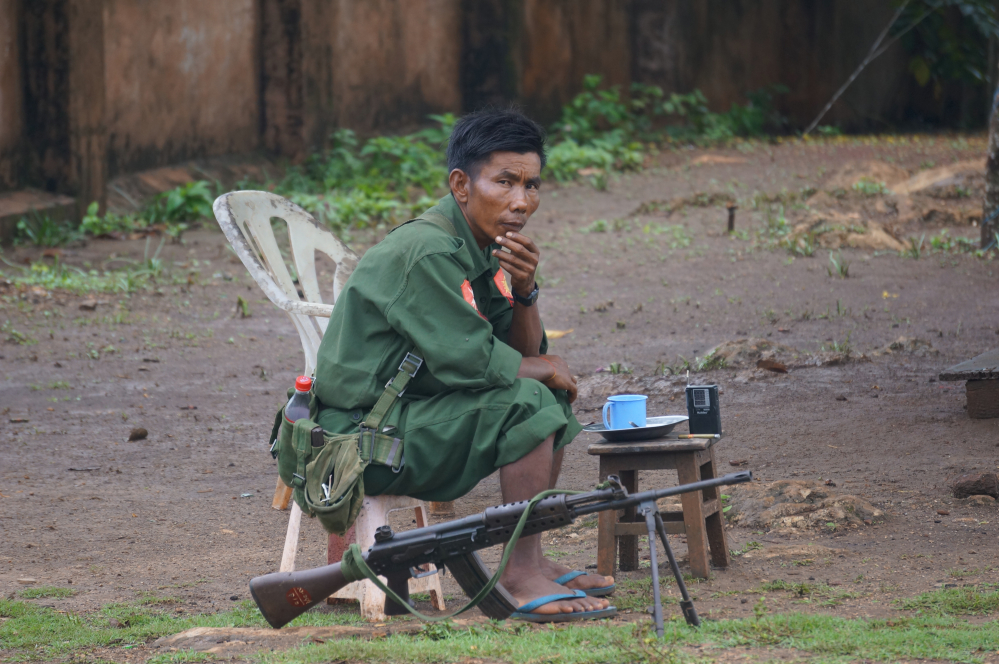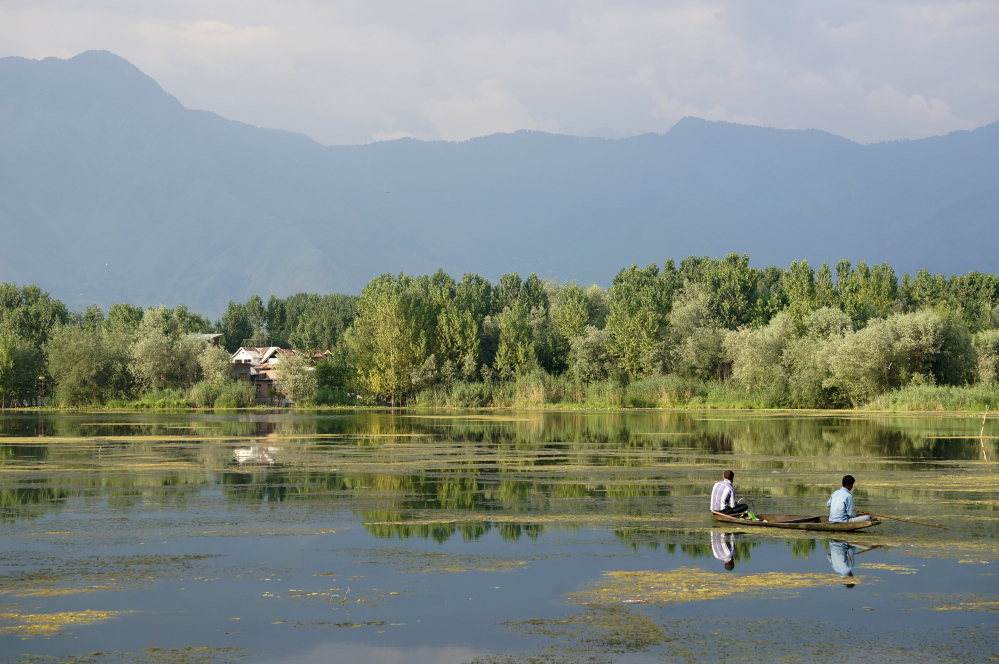After 8 weeks in Lashio, Mr Mai takes me to Kutkai township to visit the Gairlang Internally Displaced People (IDP) camps. I was unable to make the trip earlier because martial law had been declared in the township. It is still considered a ‘brown zone’ – a conflict zone – and Mr Mai is somewhat cautious about taking me to the other side.
“A week before you arrived in Lashio, two journalists were taken by militia while photographing the opium fields. They were lucky to be released,” Mr Mai says. “Yesterday a house in Jaram village, near Gairlang, was burned down.”
There is also President Thein Sein’s dubious record of imprisoning journalists to consider.
When we pass the first military checkpoint out of Lashio I am told to keep the taxi’s tinted window up and to hide behind my jacket. Mr Mai is worried that if I am seen by the soldiers they might radio ahead and give us problems later in the trip.
The scenery is green upon green upon green: corn fields and plum orchards, from which plum wine is produced, and rice paddies and water lilies, and Thirty Mountain, a famous place to take a girl on a date, according to Mr Mai.
“The corn doesn’t reseed in this area,” Mr Mai says. “A chemical prevents it to reseed. So the farmers have to buy the seed again every year.” It sounds Monsanto-esque.
Mr Mai points out heavy construction on a mountainside road. “The road to China,” he says. The deal sweetener for Chinese investment in Burma. “Stolen land from Ta’ang people.”
“That is a Chinese militia camp, only a small one,” Mr Mai says pointing out what looks like a village to me.
“On top of those high mountains the Burmese military wait for ethnic forces,” Mr Mai says pointing out a nondescript hill.
As we pass through a gorgeous forest of firs, Mr Mai says: “And there was fighting here just a few days ago.”
I fall asleep and am woken by my window being wound up to hide me from another military checkpoint.
We are taken to Gairlang by Amun, a Kutkai local. The old Gairlang IDP camp has better living standards than most of the Ta’ang villages I’ve seen. In Gairlang, there is a sign advertising the International Non Government Organisations (INGOs) who have helped to establish the camp. The roofs are the generic blue, INGO-donated, corrugated plastic with solar panels attached. There is a school for the kids.
The old camp was opened 3 years ago in 2012. Mr Mai guesses that there are around 200 people in Gairlang from 3 different villages. TSYU arranged for the IDPs to come here because it is close to a market and a town and other villages. TSYU also arranged the funding and assistance to support the camps from INGOs. TSYU had to negotiate with the local people to use their land for the camp which causes tension.
“What else can they do? Offer their own houses?” Mr Mai says with a laugh.
Some of the inhabitants walked an hour from their villages to arrive at the camp. The proximity of their homes to the violence surprises me. There are no restrictions on them living in Gairlang. They can work. The children can go to school. They can even return to their homes if they wish, but they are too afraid to return as there is still conflict there.
The people fled from conflict between liberation armies and the Burmese army. Mr Mai believes the Burmese army raid villages looking for suspected liberation army members or sympathisers.
“There is a lot of propaganda against the Ta’ang people. All the Ta’ang people are guilty of being pro-war just because of their ethnicity. Burmese people can be scared of them.”
The Palaung Women’s Organisation (PWO) claims that the surge in numbers of Burmese troops in the state has caused displacement of communities and forced 41% of the local population to migrate elsewhere for work. A PWO report documented 110 cases of human trafficking into China; however, it is likely that this is just a fraction of the total number. Of those cases most people trafficked were tricked into travelling to China by being offered well-paid jobs. 10% were forced into the sex trade. The report accounted for eleven cases of trafficking of children under 10, five of whom were under one year old. Some people were kidnapped and others were sold into slavery.
One young woman, holding a child who lazily breast feeds from an exposed nipple, is willing to tell us her story. She has been married 3 times and she has 4 children. Her first husband became a drug addict. When she divorced him she married another man who was a thief. Her third husband was part of the militia, a drug addict and committed acts of domestic violence upon her. She left him too. She became an employee helping to build homes in the camp. She tells her story with a beautiful smile, while two more of her kids grab at her crying.
“She has no-one to rely on,” Mr Mai translates. “She has to work amongst the discrimination of men to support her family. She has been in IDP camps her whole life. When she was 5, 13, 15 and, now, 30,” Mr Mai says.
The second camp we visit has only been open 3 months. There are just seven or eight houses in a green field, surrounded by mountains and cornfields. The roofs and some walls of the houses are plastic sheeting. They are yet to receive INGO assistance and for the time being the families are particularly vulnerable.
When we come back to Kutkai we are followed by a plain-clothed policeman.
“Who is he? Did you bring him from the jungle?” the policeman asks Amun.
I am worried by the repercussions of my presence in the area.
“It’s okay. It won’t be a problem,” Amun says. “And if it is, I’ll run away again.”
Amun has fled to Thailand twice already for being an activist trying to raise awareness about election fraud and the constitution.


